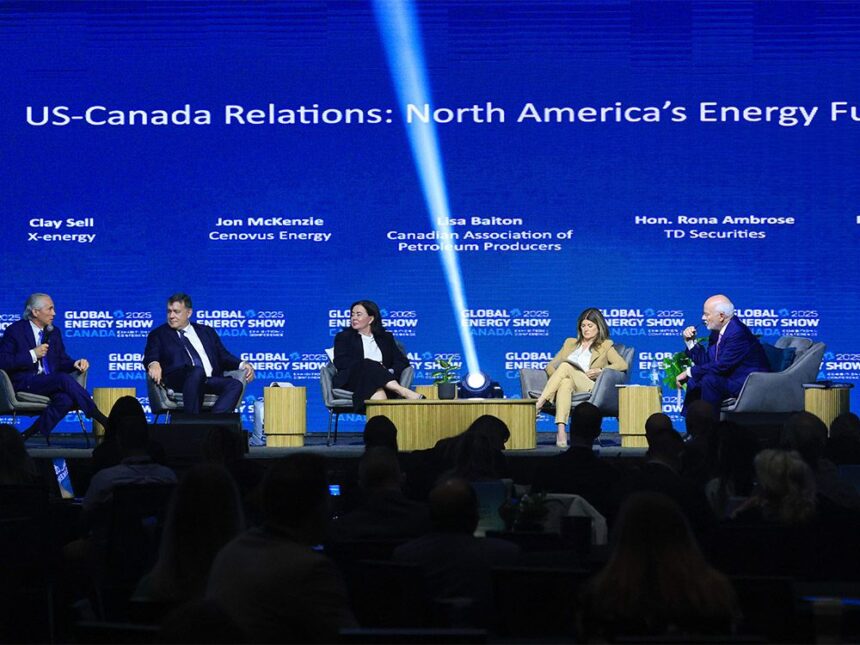The intricate dance of cross-border energy dynamics took center stage at this year’s Global Energy Show in Calgary, where industry leaders and policymakers converged to examine the evolving relationship between North America’s energy powerhouses. As Canada and the United States navigate increasingly complex geopolitical waters, their energy interdependence has emerged as both a strategic asset and a delicate balancing act.
“The Canada-US energy relationship represents the most successful energy partnership in the world today,” declared Energy Minister Jonathan Wilkinson during his keynote address. “With over $100 billion in annual cross-border energy trade, we’re not just neighbors—we’re essential partners in energy security.”
This sentiment was echoed throughout the three-day conference, where discussions repeatedly highlighted how the integrated North American energy market creates resilience amid global supply disruptions. The statistics speak volumes: Canada currently supplies approximately 61% of US oil imports, while electricity grids across numerous states and provinces operate in seamless coordination.
The relationship, however, isn’t without its friction points. Several panels addressed the growing regulatory divergence between the Biden administration’s climate-focused policies and Canada’s more gradual transition approach. Industry executives expressed concern about the impact of these differences on future investment decisions.
“We’re seeing capital allocation decisions increasingly influenced by policy predictability,” noted Sarah Thompson, CEO of Nexus Energy. “When regulatory frameworks align across borders, it creates confidence. When they don’t, investment flows change direction.”
Perhaps most striking was the emphasis on emerging opportunities in clean technology trade. Sessions on hydrogen development, carbon capture utilization and storage (CCUS), and critical minerals drew standing-room-only crowds. The North American Critical Minerals Strategy emerged as a particularly hot topic, with experts discussing how the continent’s vast resources could reduce dependence on overseas supply chains for energy transition materials.
“The competition for critical minerals is intensifying globally,” explained Dr. Marcus Chen, resource economist at the University of Calgary. “Canada and the US have a unique opportunity to create a self-sufficient supply chain for everything from lithium to rare earths, but this requires coordinated policy approaches.”
The conference also dedicated significant attention to Indigenous partnerships in cross-border energy development. Representatives from First Nations in Canada and Native American tribes in the US shared perspectives on how traditional knowledge and community-led development models are reshaping energy projects.
“Meaningful Indigenous participation isn’t just about consultation—it’s about economic participation and governance,” said Chief William Morin of the Fort McKay First Nation. “When we talk about North American energy security, Indigenous communities must be at the decision-making table.”
Energy security dominated several high-level discussions, particularly in light of ongoing global conflicts affecting international energy markets. Former US Energy Secretary Ernest Moniz, appearing via video link, emphasized that the Canada-US energy relationship provides a stabilizing influence in an increasingly volatile world.
“When we look at Europe’s current challenges with energy security, the integrated North American energy system demonstrates the value of reliable partnerships built on shared values and geography,” Moniz stated.
Looking forward, the conference identified several critical focus areas for strengthening cross-border energy cooperation. These included harmonizing carbon pricing mechanisms, streamlining permitting processes for cross-border infrastructure, developing joint technology standards, and creating integrated workforce development strategies to address labor shortages affecting both countries.
As the Global Energy Show concluded, participants acknowledged that despite occasional political tensions, the fundamental economics and geography of North American energy integration continue to drive deeper cooperation. In a world of increasing uncertainty, the Canada-US energy relationship remains a cornerstone of continental prosperity and security.
What remains to be seen is whether policymakers on both sides of the border can navigate short-term political pressures to preserve and enhance this vital economic partnership. As global energy markets transform, will North America’s energy giants lead together or chart separate courses?










